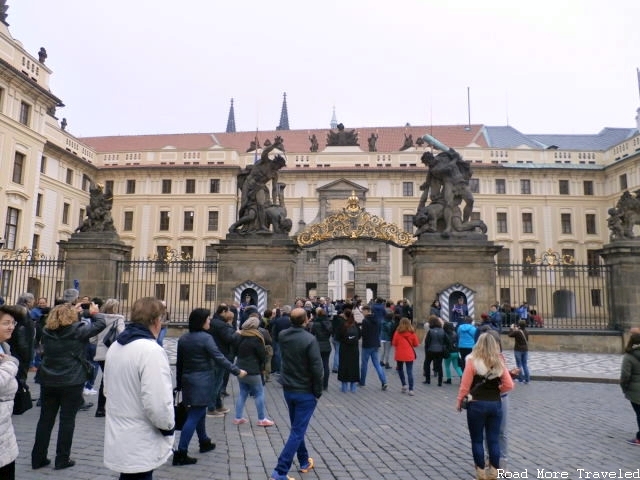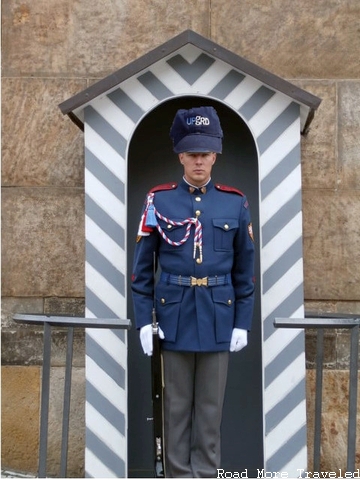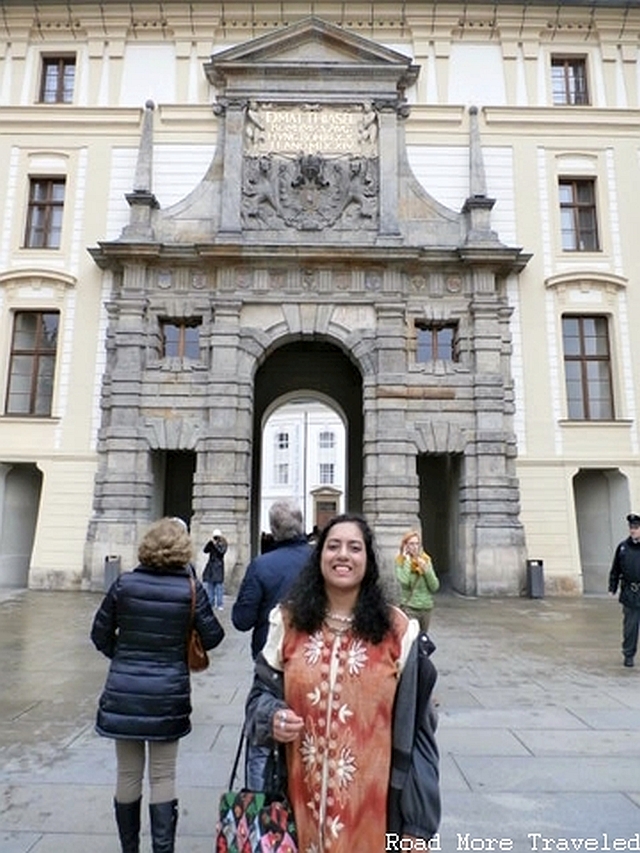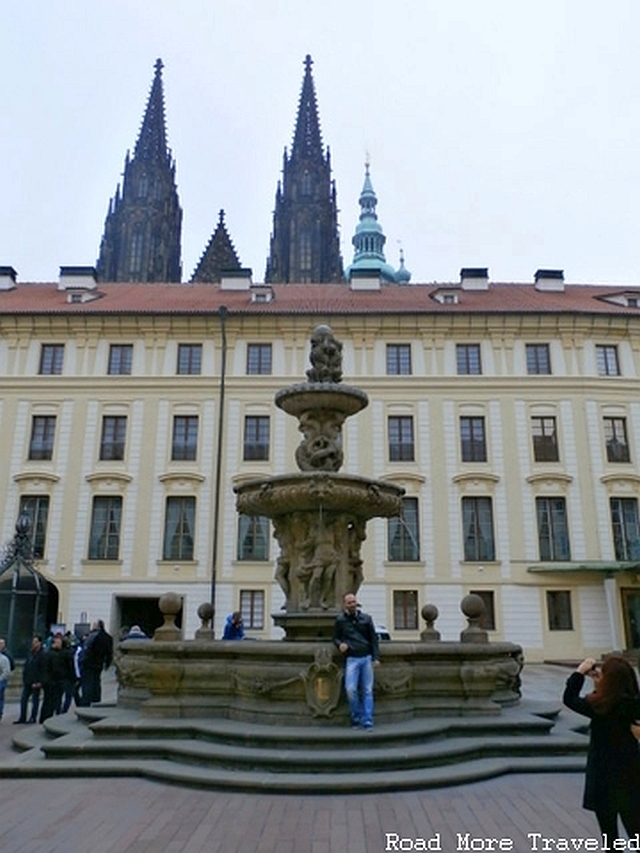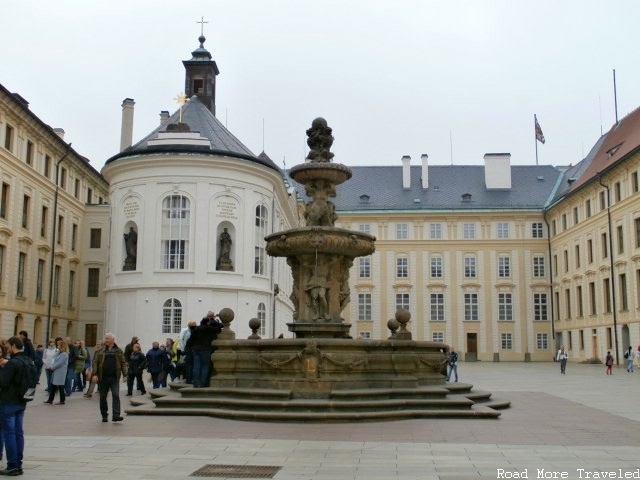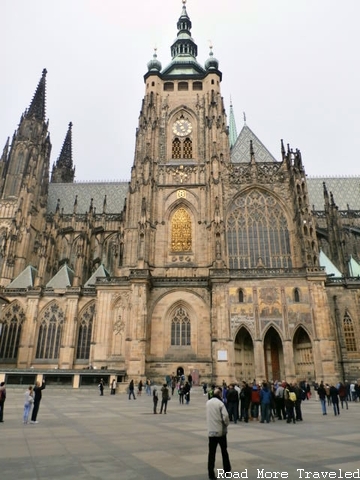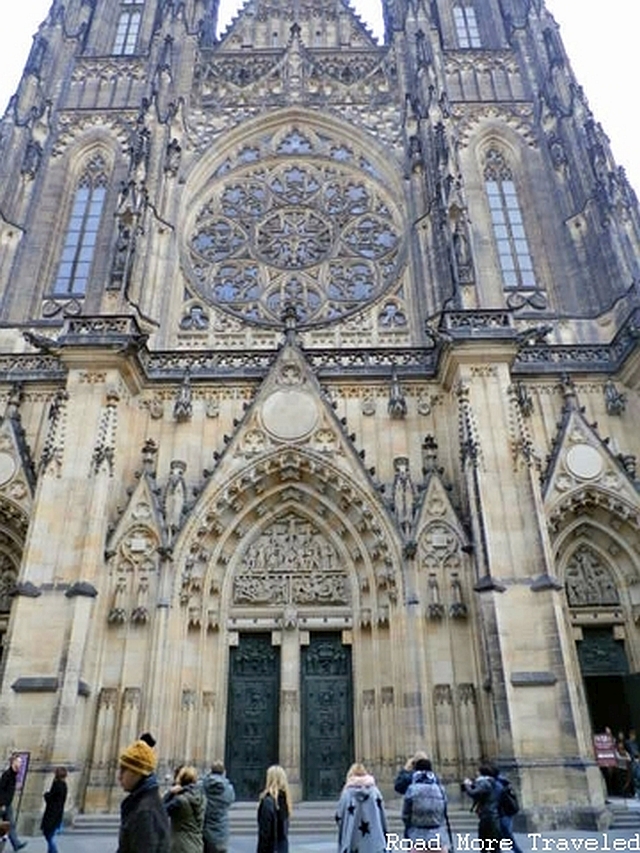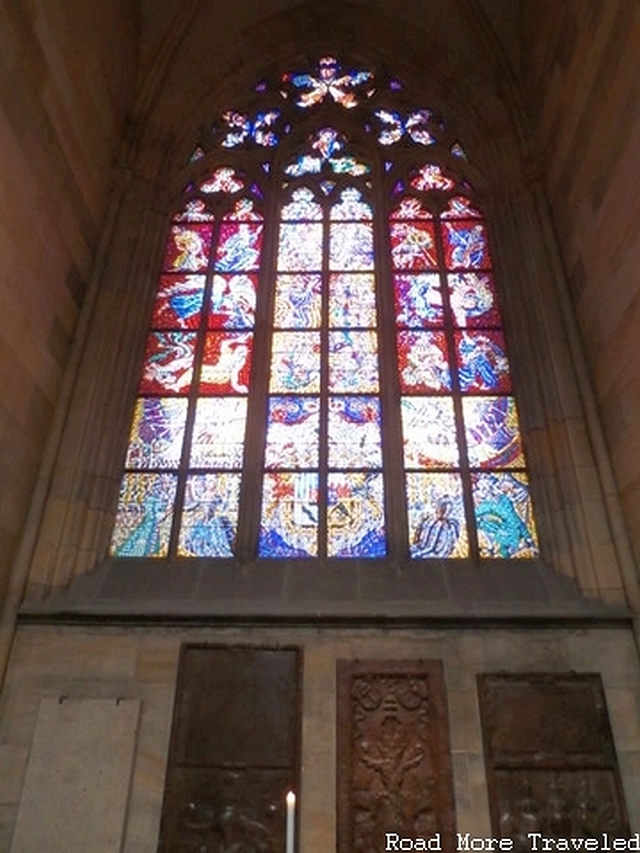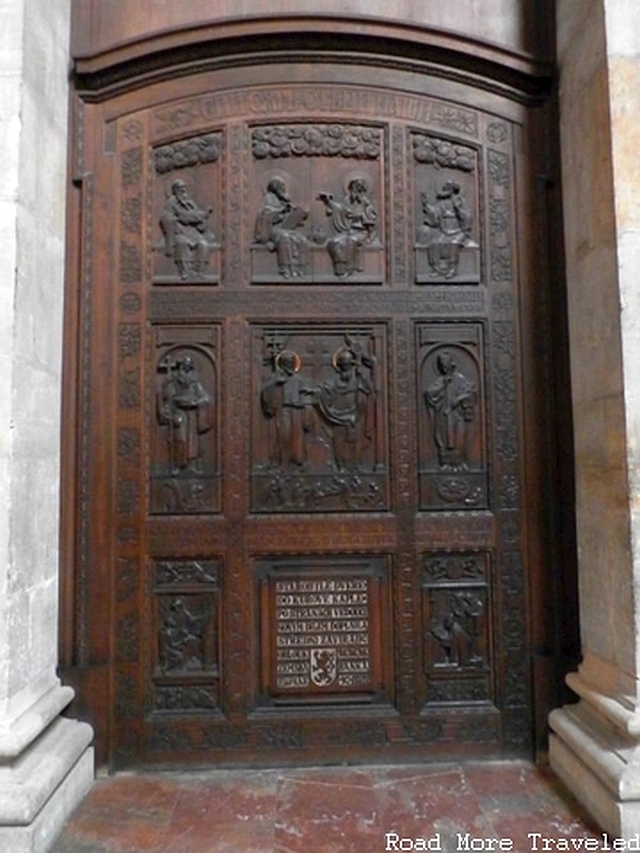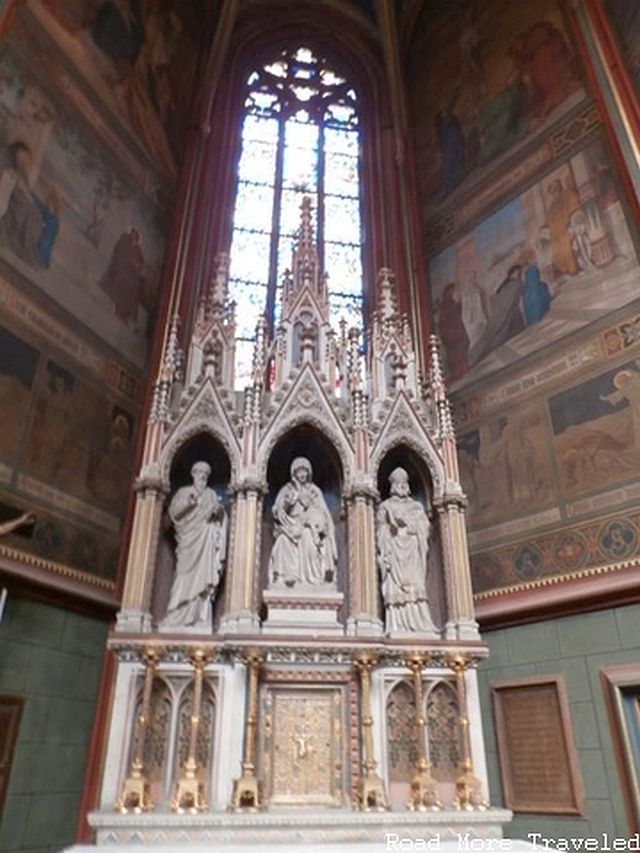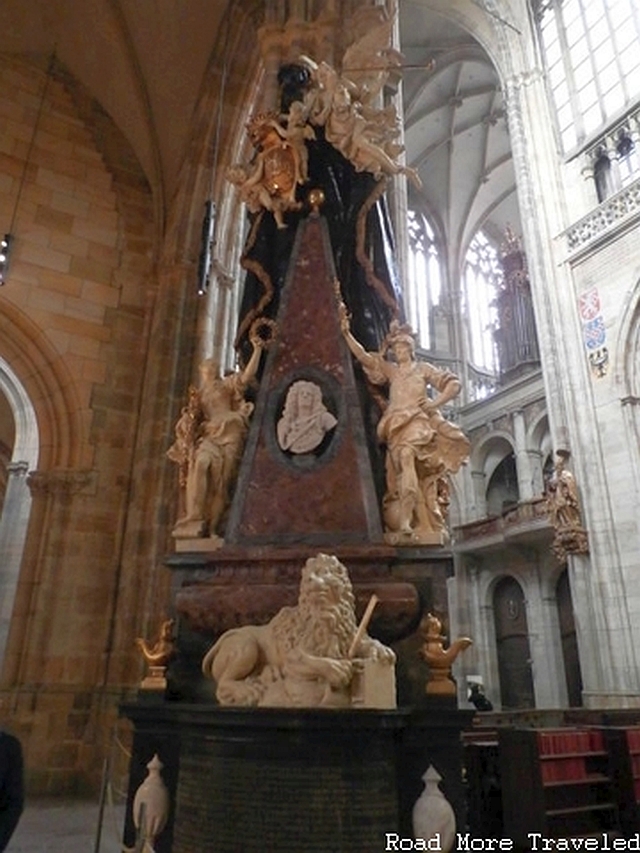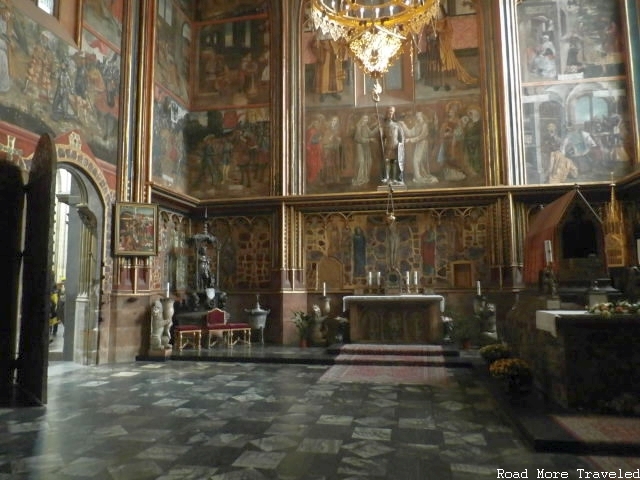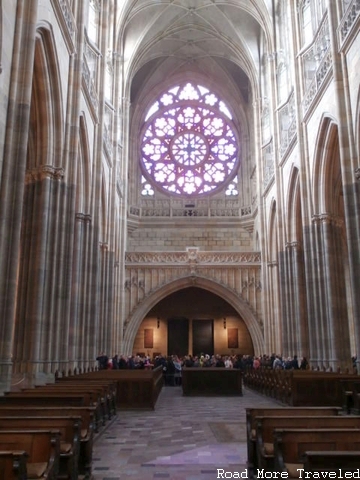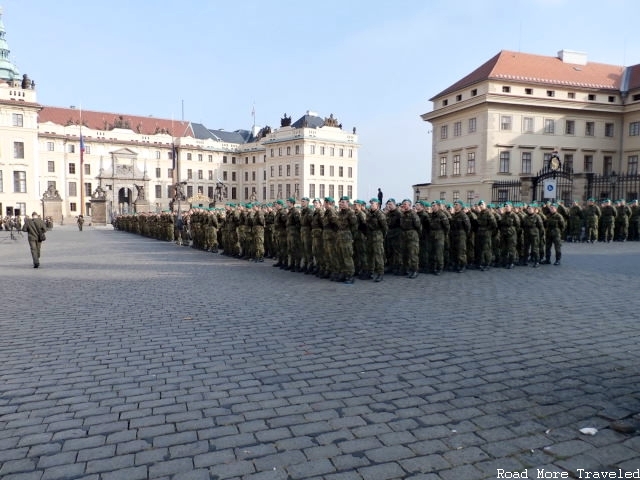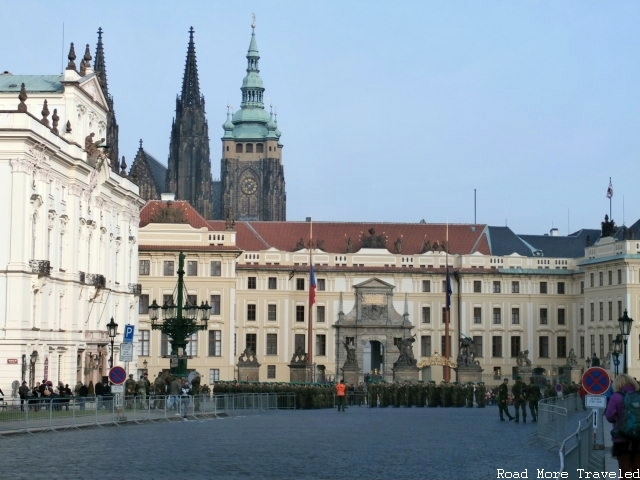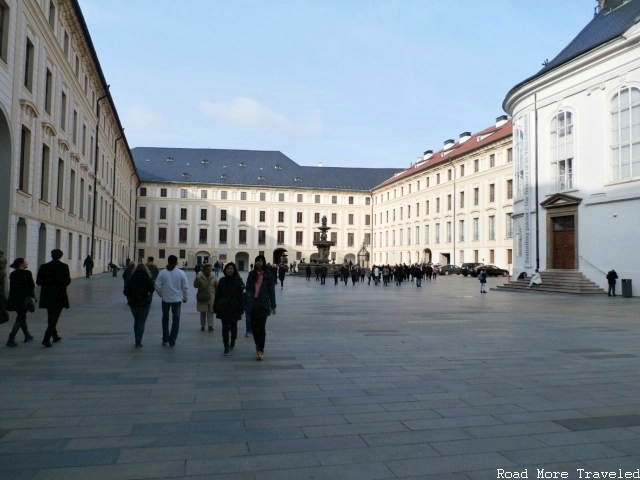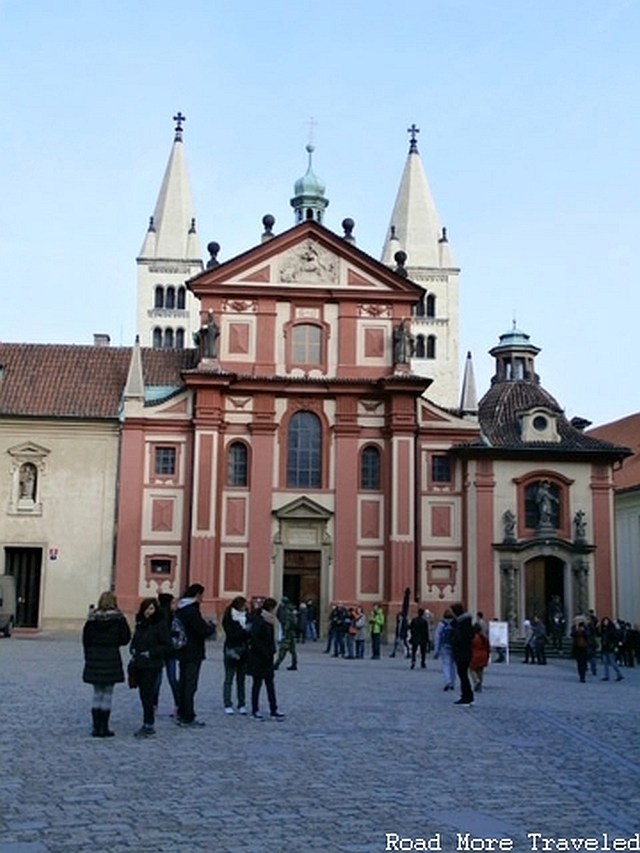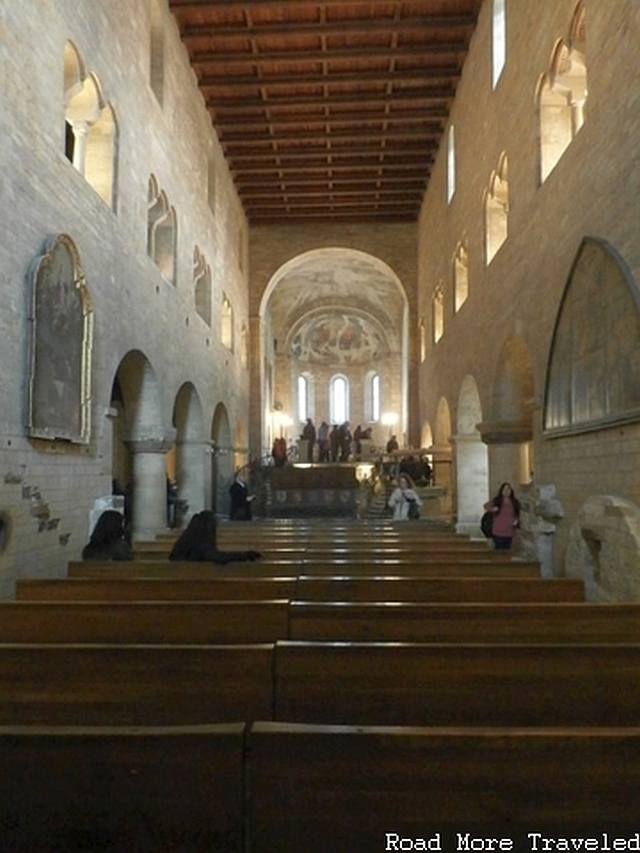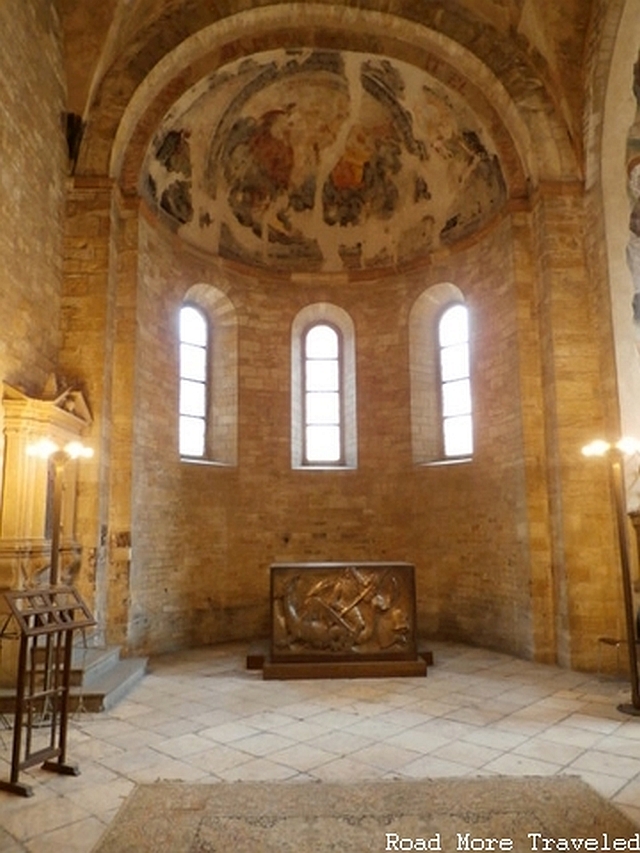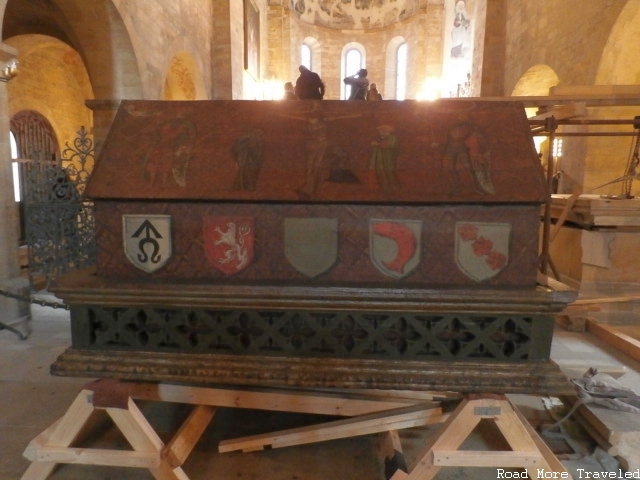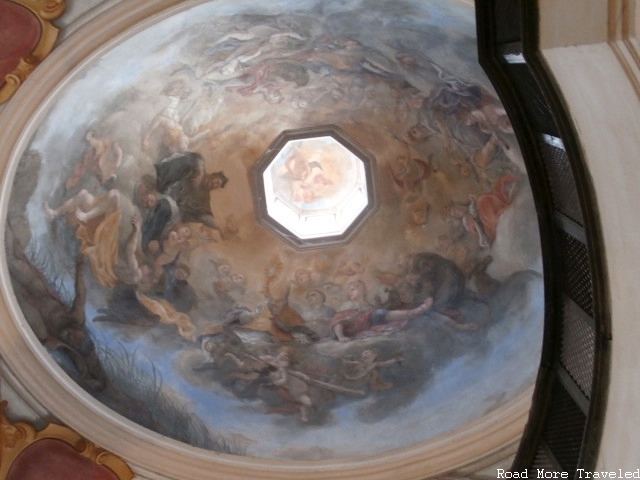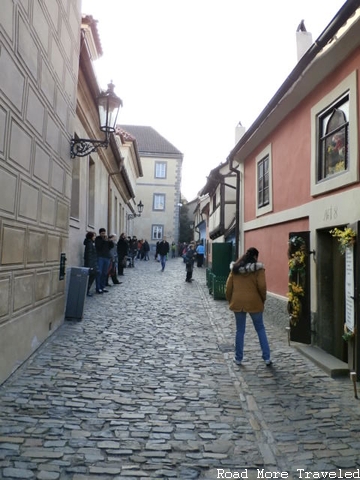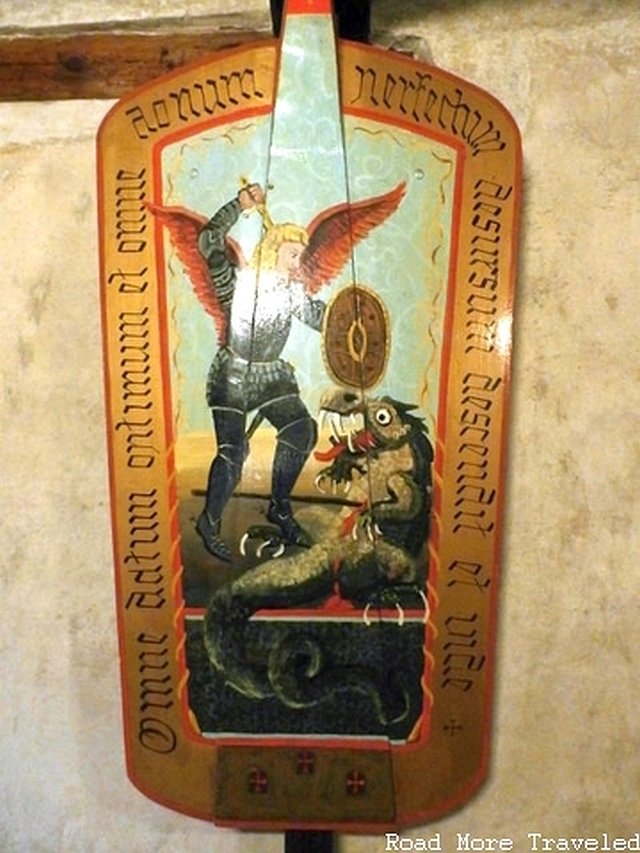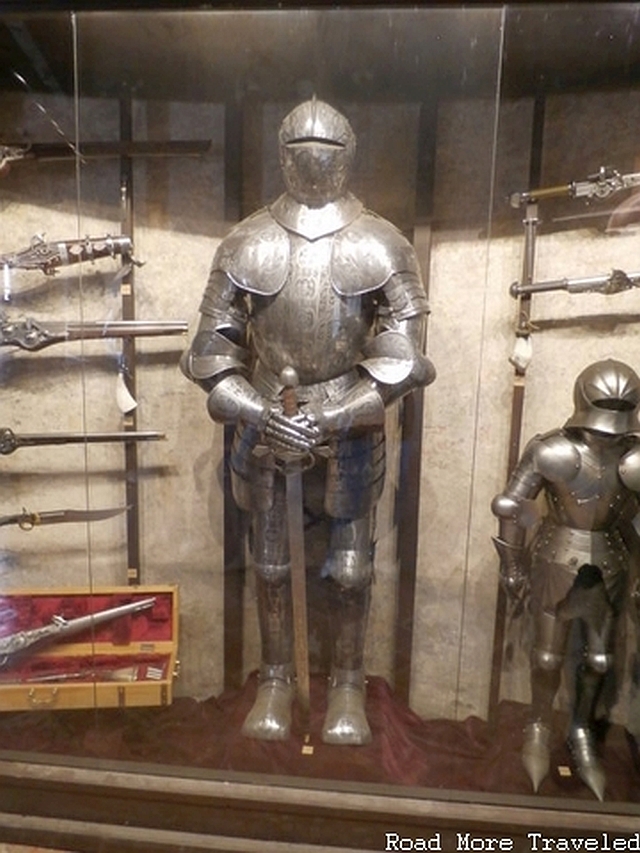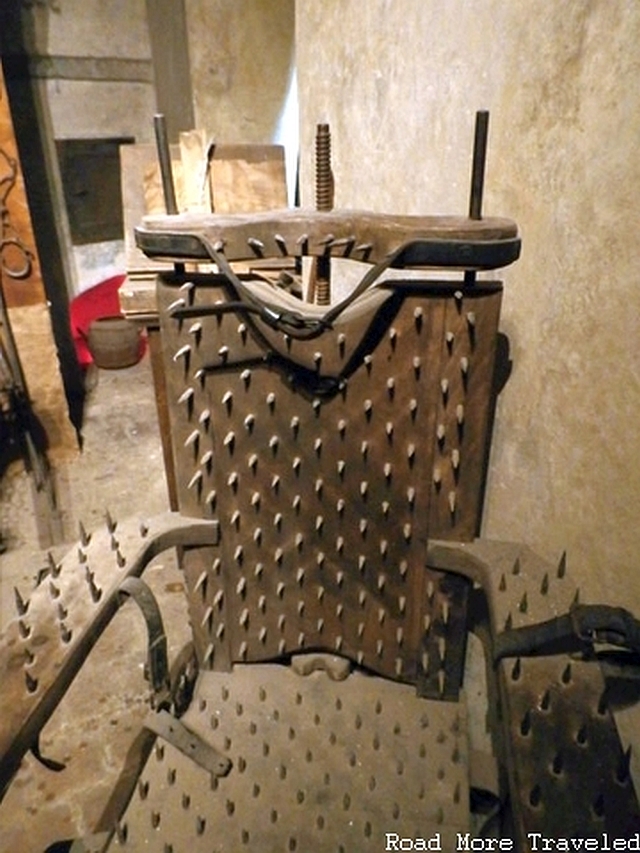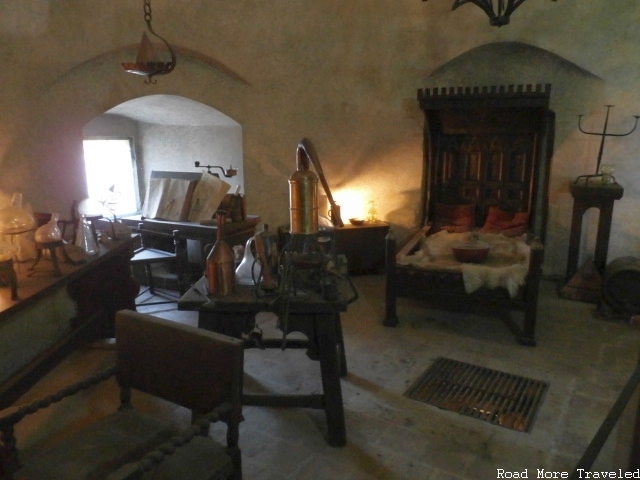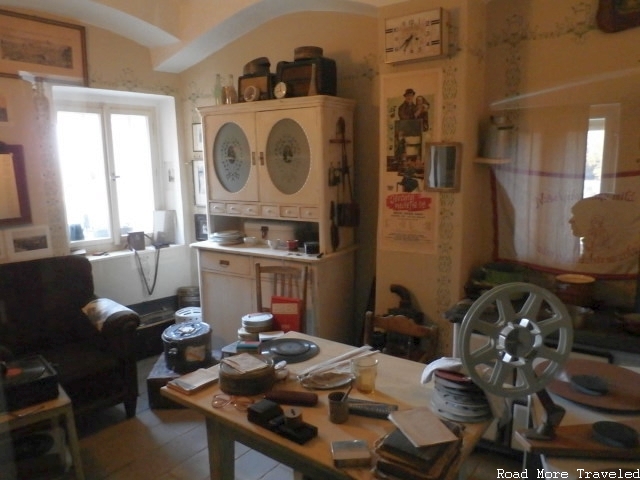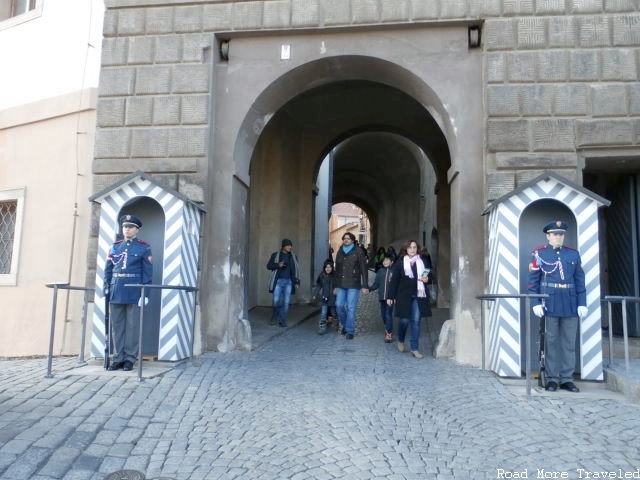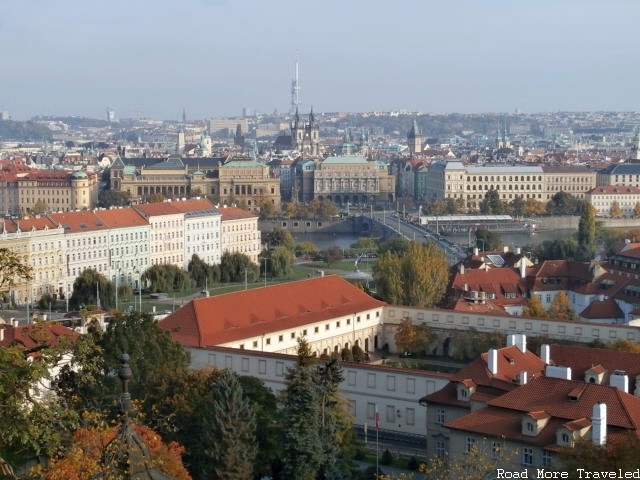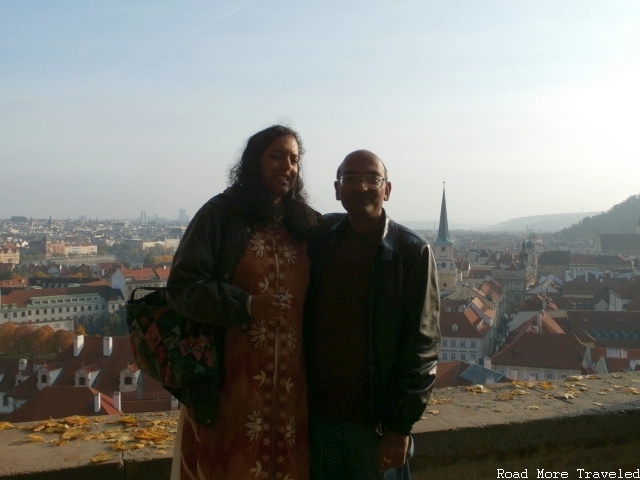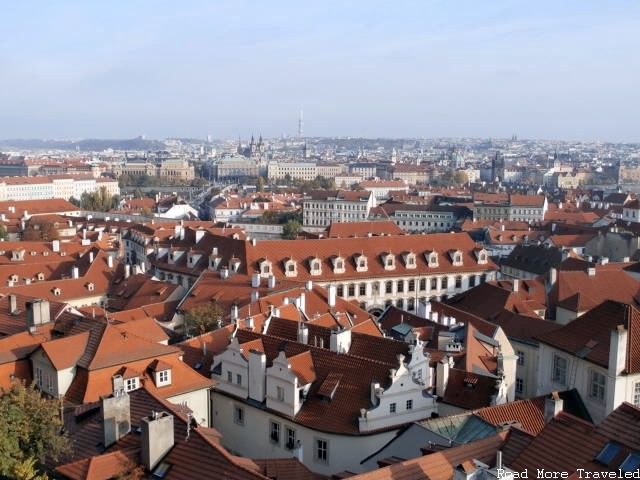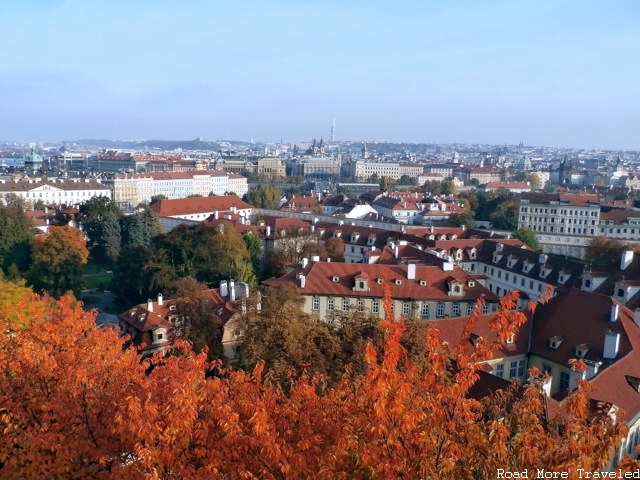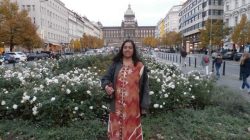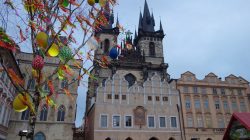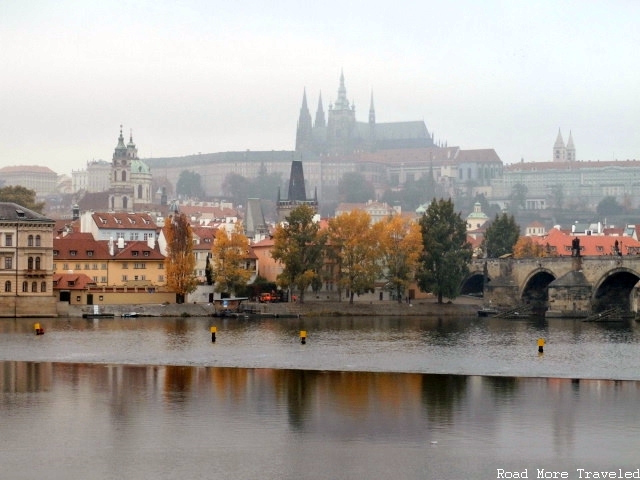
Last week’s post provided a 35,000-foot view of things to see and do in Prague if you have two days at your disposal. Today, I’ll take a more in-depth look at Prague’s most popular attraction, Prague Castle. There is, of course, a castle there. The area generally identified as “Prague Castle”, however, actually consists of several separate and distinct sites at the same location. As I’ll note later, one ticket gets you admission to most of what’s there. The castle complex dates to roughly the beginning of the 9th century, and is currently the largest contiguous castle complex in the world, stretching over an astounding 70,000 square meters.
Getting There
Prague Castle (Pražský hrad) is located on a hill overlooking Lesser Town, on the west side of the Vlatava River. From Old Town and the city center, it is accessible via the Metro “A” line at Hradčanská station, or Route 91 of the city tram at Pražský Hrad station; both are located to the north of the castle, past the gardens. For a real Prague experience, though, consider walking from Old Town across the Charles Bridge. It is approximately a mile and a quarter, and takes roughly 30 minutes. Beware that the final 1/4 mile or so from Lesser Town involves a steep climb up a narrow cobblestone street.
You can drive to Prague Castle from the city center, but I don’t recommend it. Prague traffic isn’t awful – in fact, most drivers seemed reasonably respectful of traffic signals and pedestrians during our visit. But the streets through Old Town, New Town, and Lesser Town are narrow and change directions frequently. It is very easy to get lost.
Opening Hours, Tickets & Admission
The castle grounds itself is open from 6 am-10 pm daily. Individual sites open from 9-5 from April through October, and 9-4 from November through March. There are several ticket desks in the complex, with the main one in the courtyard just inside the main gate. Tickets are sold in “packages”, which are rather confusing as they cover admission to different areas, though there is no single package that provides access to everything. We purchased the “Circuit A” package for CZK 350 (~$14) each, which is the most comprehensive ticket available. If you have a camera, you’ll also have to pay an additional license fee of CZK 50 (~2). Note that all tickets are valid for TWO days, the day of purchase and the day after. So if you can’t finish everything in one sitting, don’t fret.
Should you hire a guide to visit the castle? I didn’t really find it necessary, but you can hire the services of an English-speaking tour guide at the ticket office for a fee of CZK 100 (~$4) per hour, with a CZK 400 (~$16) minimum. You can also rent an audio guide for CZK 450 (~$18) per day.
For a full list of all ticket packages and prices, and maps of the castle grounds, visit the official Prague Castle website.
The Experience
Our day at the castle started around 10:30 in the morning. As you finish walking up the hill from Lesser Town the first thing you see is the main castle gate, flanked by palace guards.
Prague Castle main gate
Some photoshop fun at this guard’s expense
Once you pass through the gate, you pass through a double courtyard of sorts. Behind the main gate is a small courtyard, with another archway to pass through.
Behind this archway is the main courtyard, featuring an elaborate fountain and views of St. Vitus Cathedral.
You’ll find the ticket office in this courtyard, which you’ll need to visit if you want to access any of the buildings on the palace ground. The line was painfully slow, but we eventually got our “Circuit A” tickets, and began our tour with the Gothic masterpiece, St. Vitus Cathedral.
The towering Gothic spires are what most people think of when you mention Prague Castle. What you are actually seeing, though, is the impressive church towering over the castle grounds. St. Vitus Cathedral is the seat of the Archbishop of Prague, and the original church dates back to c. 926 A.D. The current Gothic structure, however, dates to the mid-14th century. You’ll immediately notice the impressive main entrance of the cathedral. Take a guess when this was completed (answer after the photo).
The entrance bears a resemblance to the Notre Dame in Paris, so you might think it similarly dates to the 14th century as with the remainder of the Gothic section of the cathedral. But you would be wrong. This entrance was not completed until 1929. Yes indeed, the completion of the main entrance also marked, at long last, the final completion of Prague Castle, some 1,100 years after construction on the complex first began.
Inside, the cathedral is simply spectacular. From the stained glass windows, to the massive wooden doors, to the remarkable sculptures and frescoes throughout, it’s apparent why St. Vitus is considered one of the finest Gothic churches still in existence today.
There is also a bell tower than you can climb, undoubtedly for a fine view of Prague below. It is 287 steps to the top, however, so it is definitely not for those out of shape or claustrophobic. You could probably spend all day at the cathedral searching every nook and cranny and climbing to the top. If you just want to see the basics, about 45 minutes should do the trick.
Our next stop was going to be the Old Royal Palace, but unfortunately, it was closed the day of our visit due to some kind of event. Bummer. So we moved on to the “Story of Prague Castle” exhibition. The exhibition contains many palace and Bohemian historical artifacts, and is most definitely worth seeing. Unfortunately, photography is not allowed inside, so I can’t share what we saw. After seeing the exhibition, it was getting close to lunch time, so we headed back outside to grab some food before seeing the rest of the castle. Since it was just about noon, though, we were just in time for the castle’s ceremonial changing of the guard. We were able to snag a watching spot pretty close to the action, so I made this short video.
[youtube https://www.youtube.com/watch?v=O1R4ZXy3U9s]
A word about lunch if you’re planning to be at the castle all day. If you’re prefer not to leave the castle complex, there are a handful of restaurants and street vendors on-site, though as you might expect, prices are higher than what you would find on the outside. If you walk west just a short distance outside of the castle gates, you can find many restaurants serving traditional Czech cuisine (probably touristy, but the place we found was cheap, good, and deserted to boot). After some delectable venison goulash and Czech beer for lunch, we returned back to the main gate to find some kind of military parade underway. I’m not exactly sure what was going on, but we stood around and watched for a few minutes.
With so many people watching the festivities outside, the courtyard was relatively uncongested, unlike earlier in the morning.
We then picked up where we left off, heading for St. George’s Basilica.
Though the main façade is a relatively “new” (late 17th-century) Baroque construction, St. George’s is the second oldest church in Prague, built in the year 920. Inside, you can definitely see the Romanesque style typical of the 10th century. Though much smaller and less ornate than St. Vitus, St. George’s is arguably more interesting given the age of what’s inside.
There is also a very cool storage chest of some kind, featuring a medieval Bohemian coat-of-arms.
And last but not least, faded frescoes up on the rotunda ceiling.
After St. George’s, we headed over to what might be the most fascinating part of Prague Castle, the “Golden Lane“. The area dates back to the 16th century, when 24 miniature houses were constructed to house the castle’s marksmen. The origin of the name “Golden Lane” is uncertain, though one legend says the king at the time housed his team of alchemists here, who then used the space in their attempts to turn metal into gold. As you enter the lane, you’d be forgiven for thinking you’d entered the land of dwarves, given the narrow street and tiny houses, and the imposing castle walls on one side
On one side of Golden Lane is Daliborka Tower, which contains a medieval weapons collection. Some are items you’d typicall expect, like this shield with coat-of-arms and chain mail.
Other items are, shall we say, rather interesting, like this medieval version of “the chair”. Except instead of an electric chair, I’d venture to say this version was far more terrifying for the condemned.
Yikes…
On the other side of Golden Lane are restored houses. Amazingly, people lived in these houses until after World War II. At that time, the final residents vacated, and Golden Lane became a historical exhibit. One of the lane’s most famous residents was writer Franz Kafka, who lived here for a time during World War I. The houses have been restored in period furnishings, ranging from the 16th century through the early 20th century.
At the end of Golden Lane is yet another castle gate, this one also guarded by palace guards. I didn’t try to stick the UPGRD hat on one of them, though.
We spent our last bit of time at Prague Castle walking down the sprawling Southern Gardens. Though not as well known as the much larger Royal Garden on the north side of the castle, the Southern Gardens provide some of the best views of Prague you’ll find anywhere, especially of Lesser Town and Old Town. The quaint red roofs of Lesser Town are especially noticeable from up here, and if the weather is clear as it was on this afternoon, you can enjoy a clear view of Old Town Square.
We ended our castle tour shortly thereafter after walking back to the main gate.
How Much Time to Budget
Our total time spent on the castle grounds was a little more than 4 1/2 hours, including an hour lunch break. That was enough time to see all but two of the attractions that our tickets entitled us to: the Powder Tower, and Rosenberg Palace. Another hour probably would have been enough to squeeze in both of those, so I would say if you want to complete “Circuit A” and enjoy a nice lunch outside the castle, about 6 hours should give you enough time. If you’d also like to see the Treasure of St. Vitus Cathedral and Prague Castle Picture Gallery exhibits, the South Tower viewpoint, and the north gardens, you would need a full (minimum 8 hour) day. The good news is, since tickets are good for two calendar days, you can easily spread your visit out over two days for a more relaxed experience.
Next up: a review of the Archibald City Hotel, our home away from home during our 2 1/2 days in Prague.
This post is part of my trip report series about our trip to the Czech Republic and Romania in October. Click here for the introductory post and trip report index.


